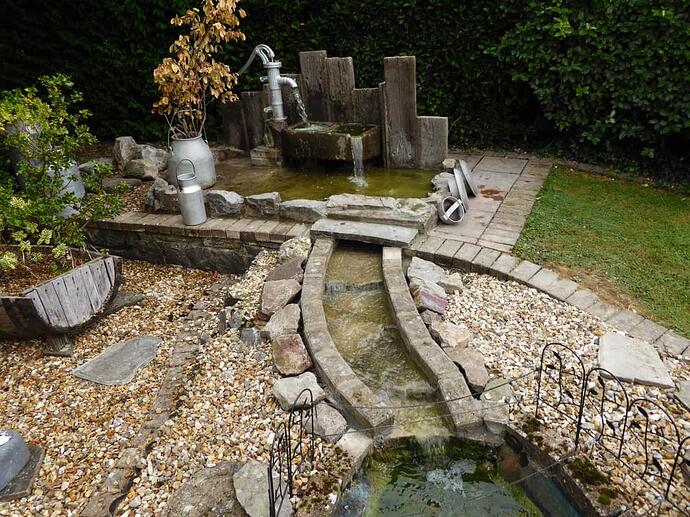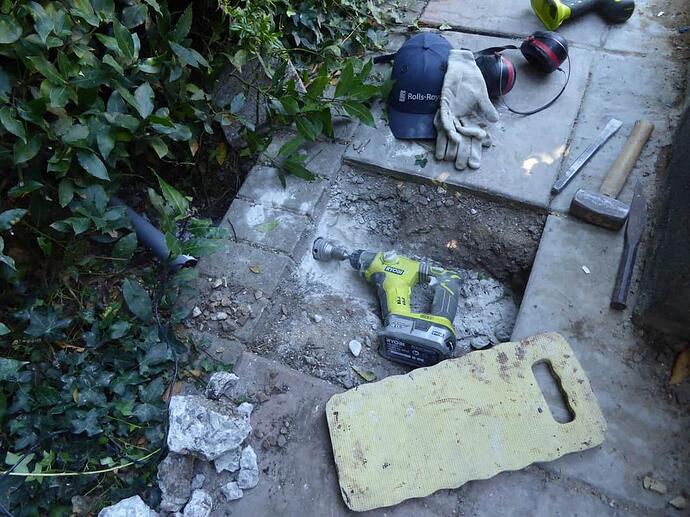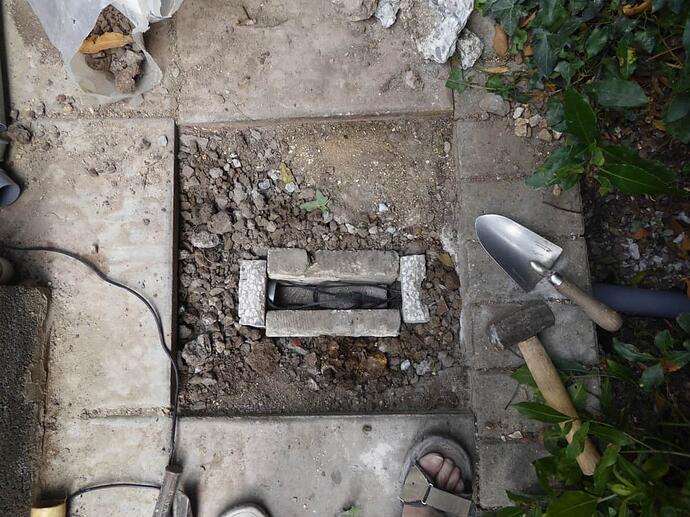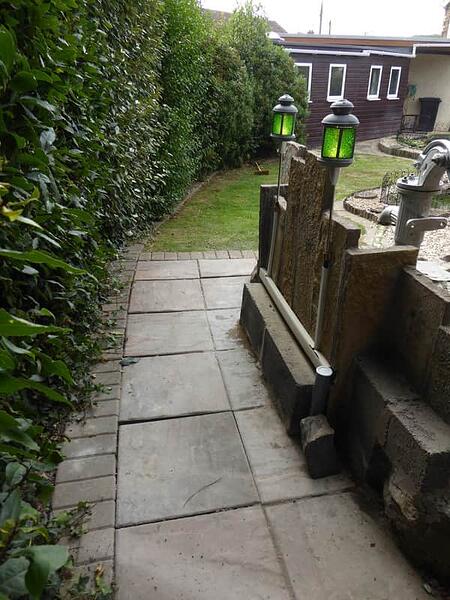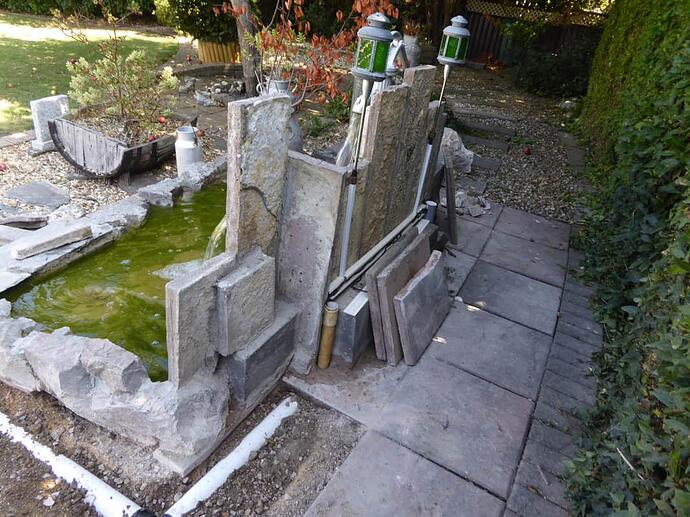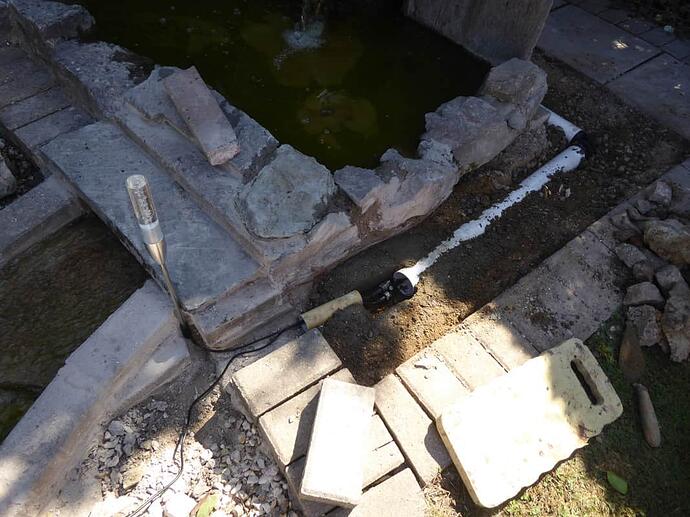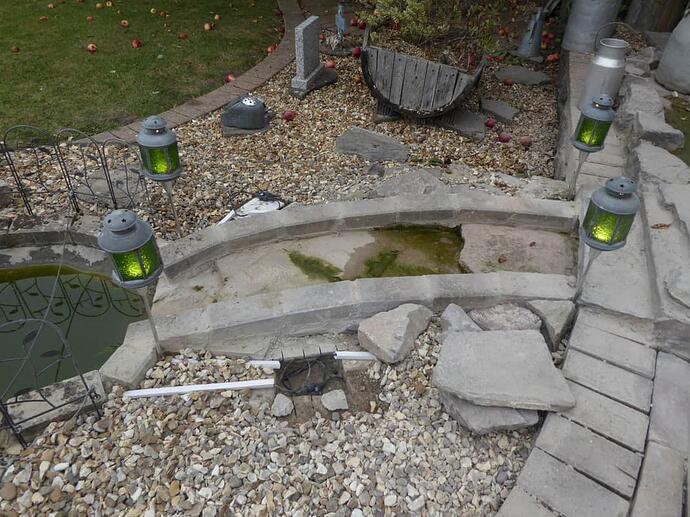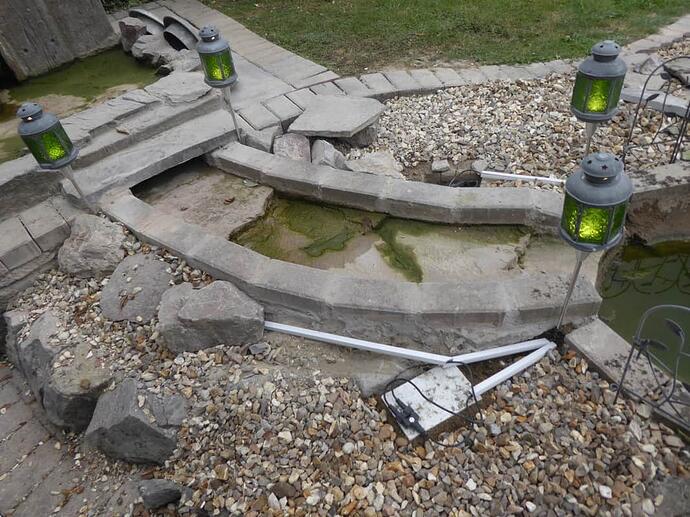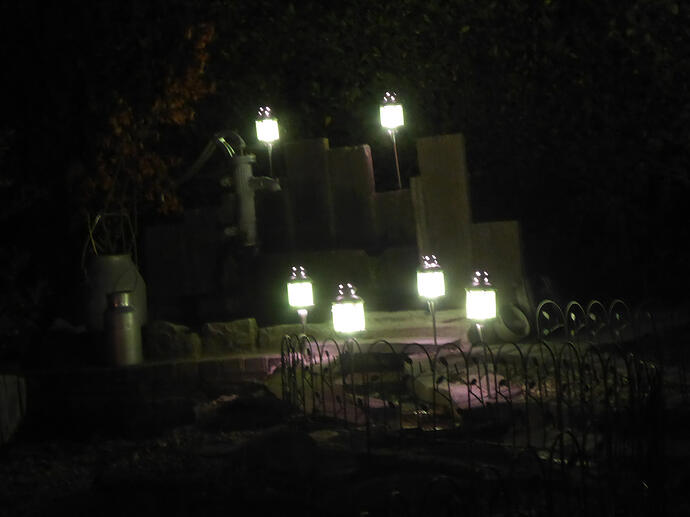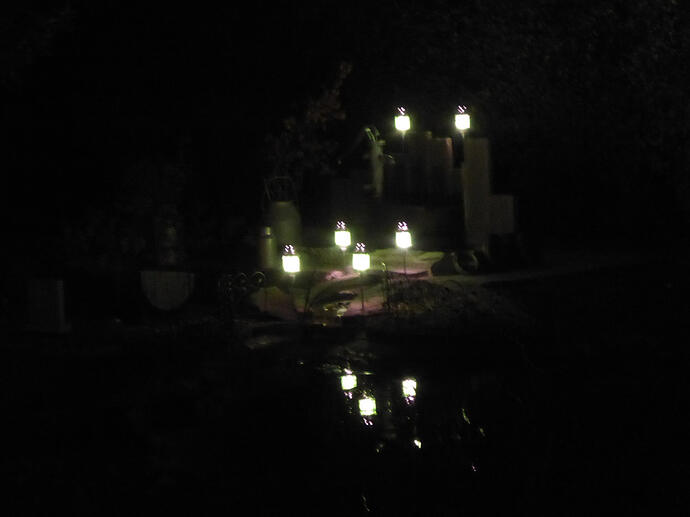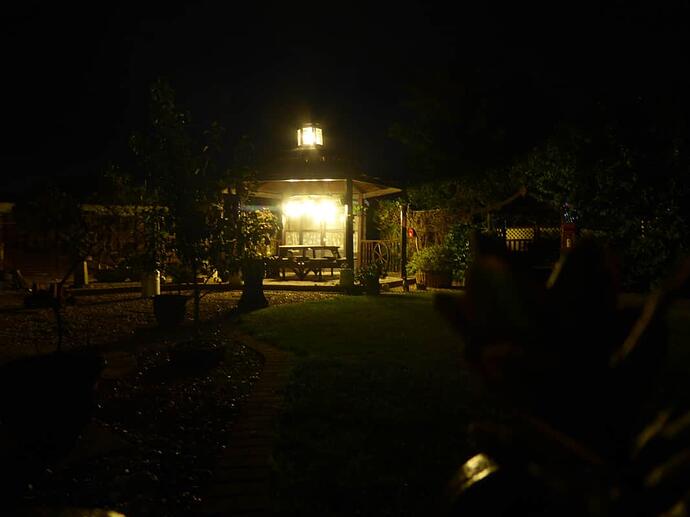We bought these nice lanterns whilst on holiday in Cartmel many moons and suns ago.
Made from galvanised steel and glass, and meant to sit on wooden steel-tipped posts, they were designed to house tea-lights,
… but I wanted to convert them to run on electrickery so they could be switched on by a timer, or remote control with the rest of the garden lights. It has taken me a while to find something suitable, but eventually I decided that this set of six 12v DC LED lights would be perfect.
Just a quick check by poking the lights through the lantern doors to get an idea what they might look like when converted. Yep, that will do nicely.
Take one lantern,
Then top …
… and tail the excess tinware.
It’s now ready to have a hole cut into the double-skinned base to take the new elastic-trickery lights. Note the star shaped vents in the chimney cowl.
Chain-drilling it’s bottom.
Making sure both skins were pierced.
Unzipping the inner base with a reciprocating detail-saw.
Doing the same to the outer skin. Safety first!
Peening over the sharp edges. Repeated for the inner skin.
Upside down. The base of the chimney was angled down. By reversing the chamfer, it made a recess for the top of the LED light to sit in and centre the lantern perfectly.
I kept a couple of the tin choobs to add to my metal store in case I found a use for it on another project. The rest of the scrap went in an empty baked bean tin and was then put out with the rest of the household recycling.
Test firing of the first completed conversion.
All six completed and set out in daylight.
Darkness descends.
The photos don’t really do them justice, and we have yet to decide on their final resting place, but my Lovely Cousin is pleased with the result. We are especially pleased with the light breaking through the star-shaped holes in the chimlies.

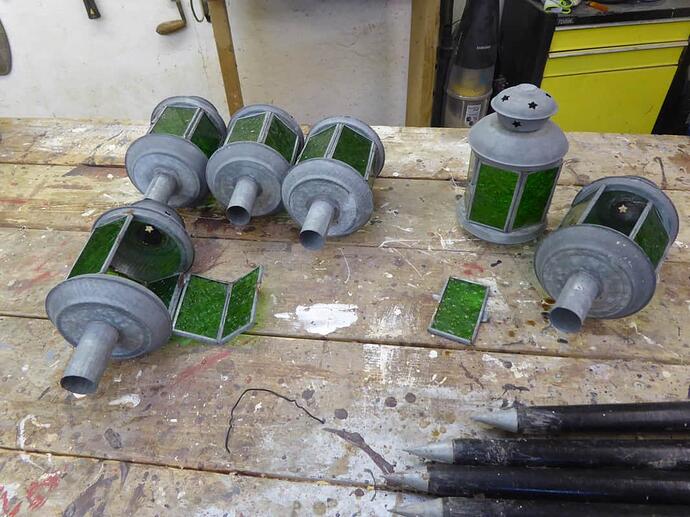
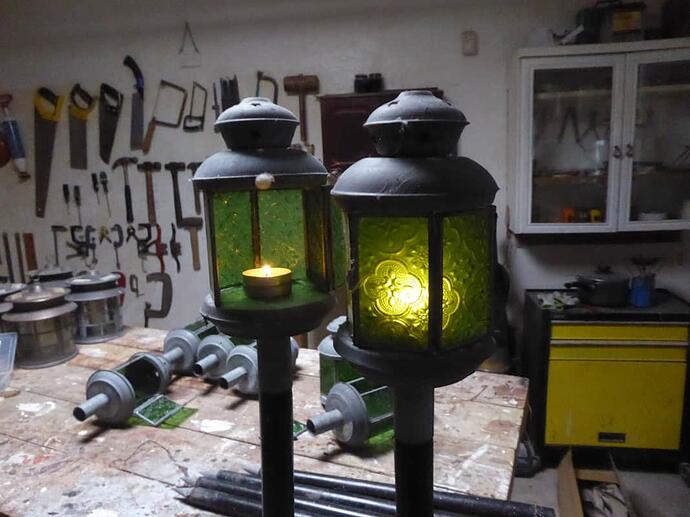
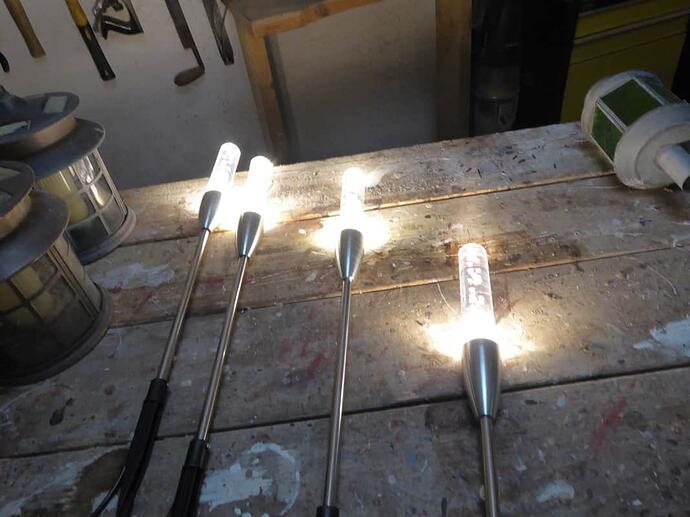
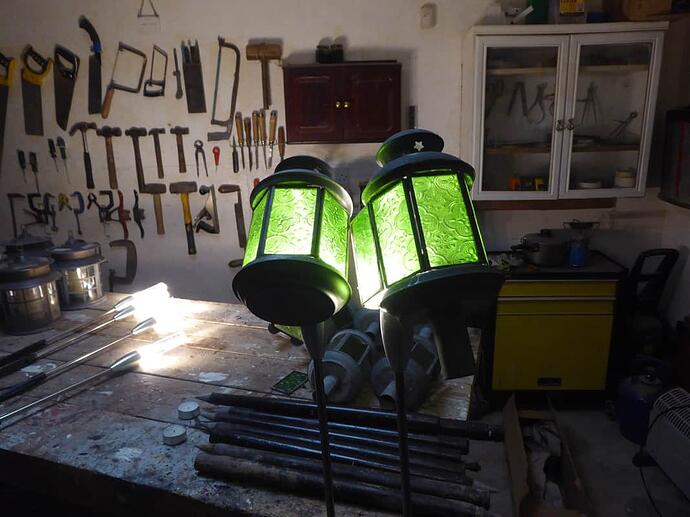
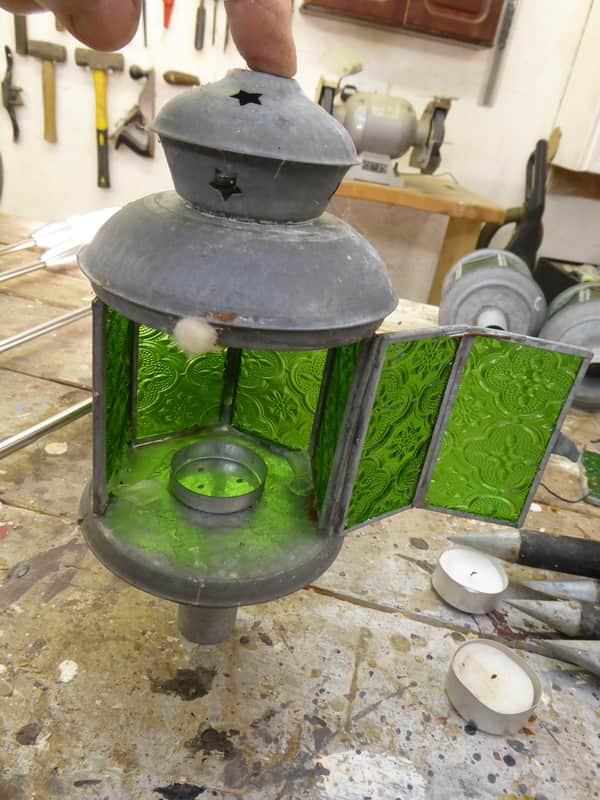
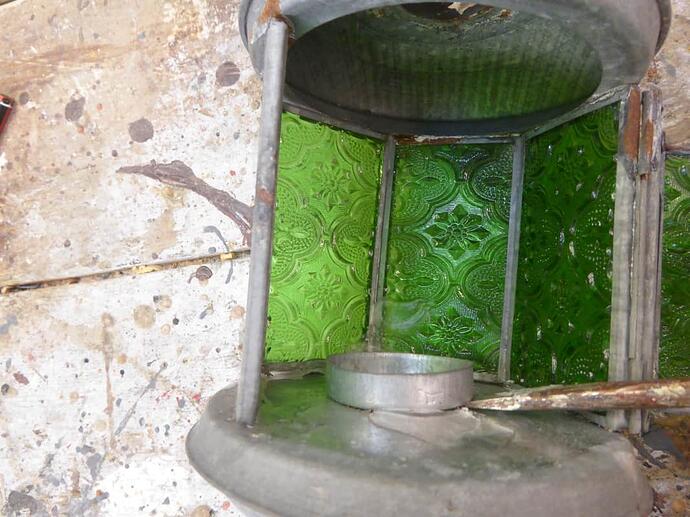
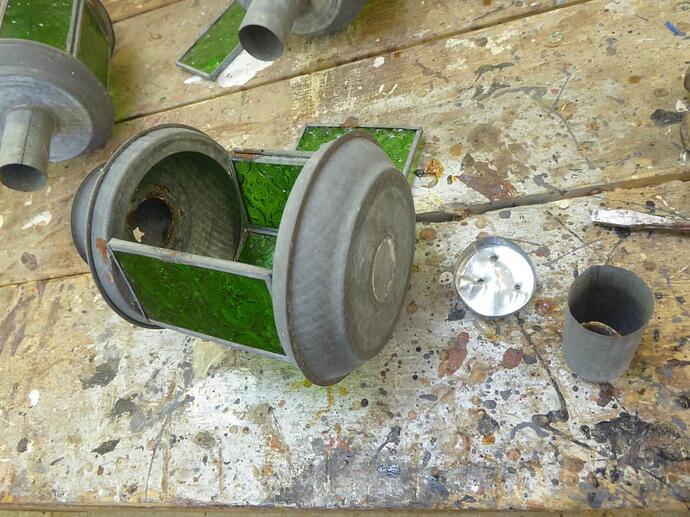

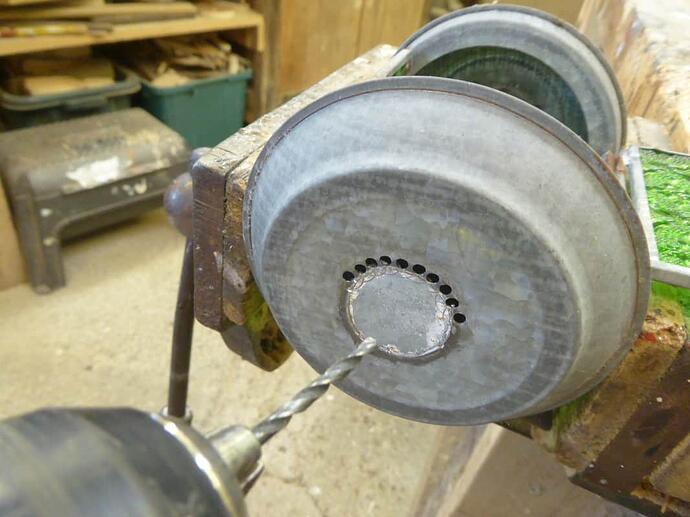
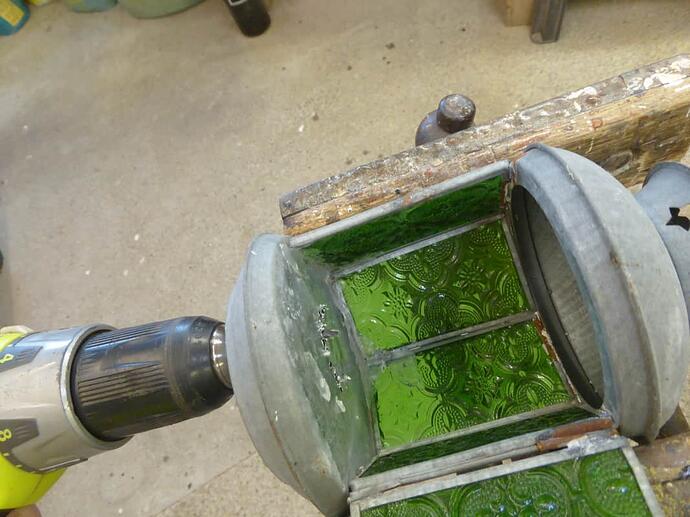
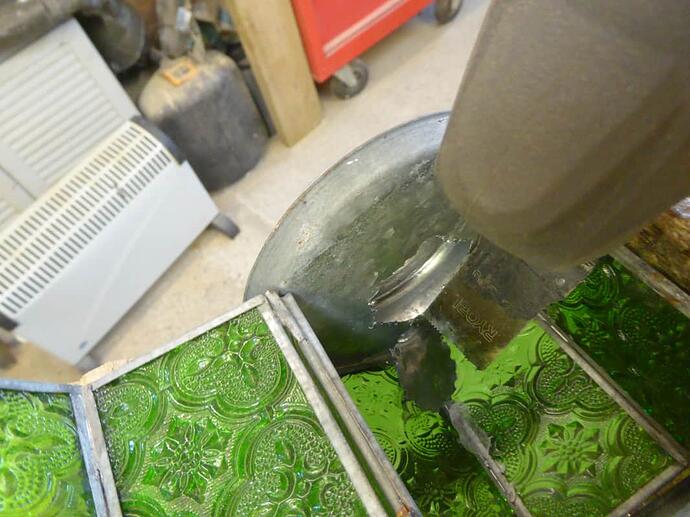
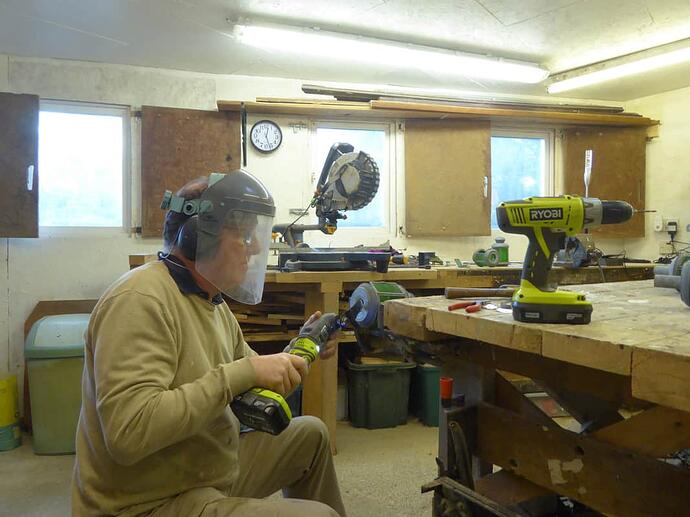
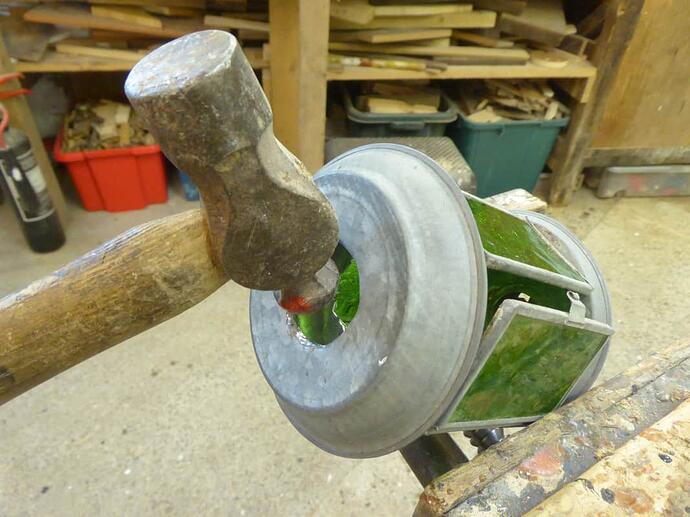
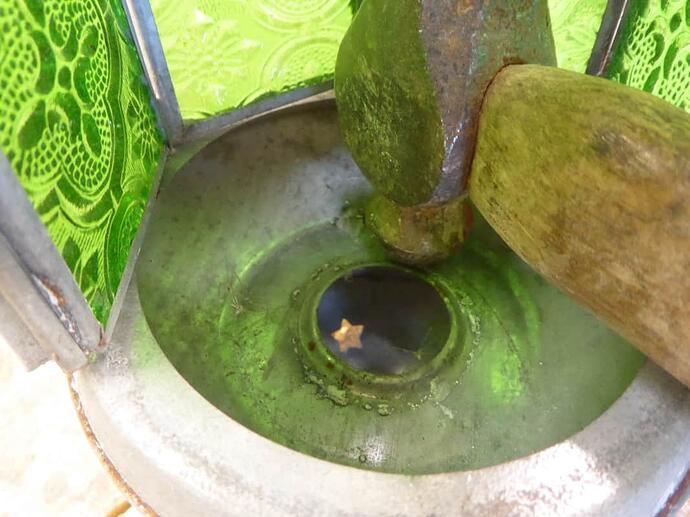
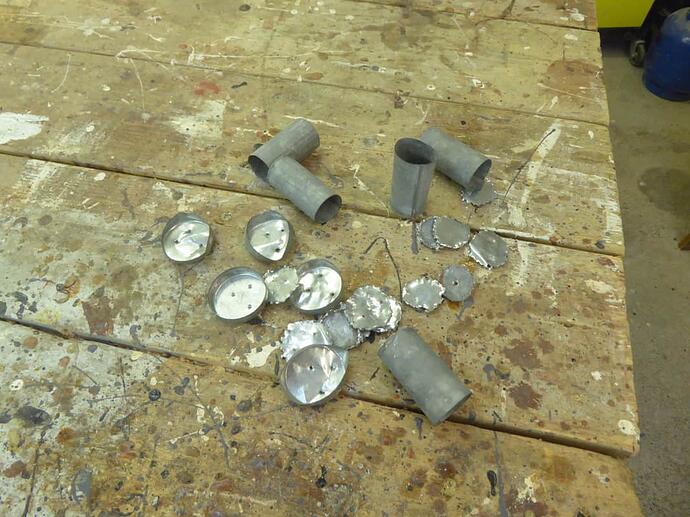


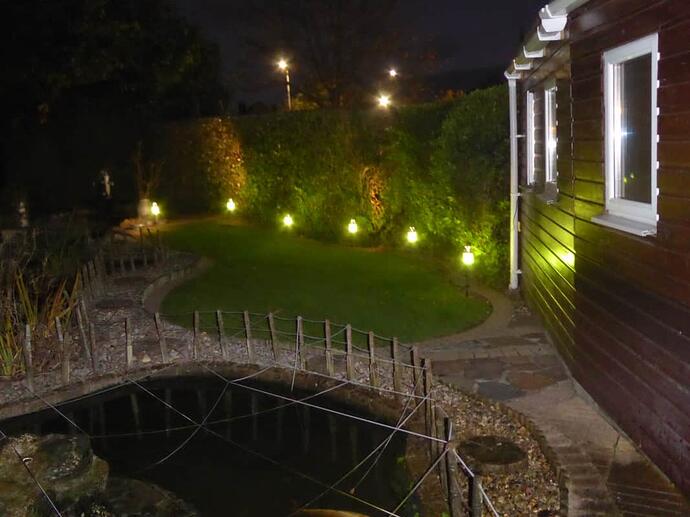
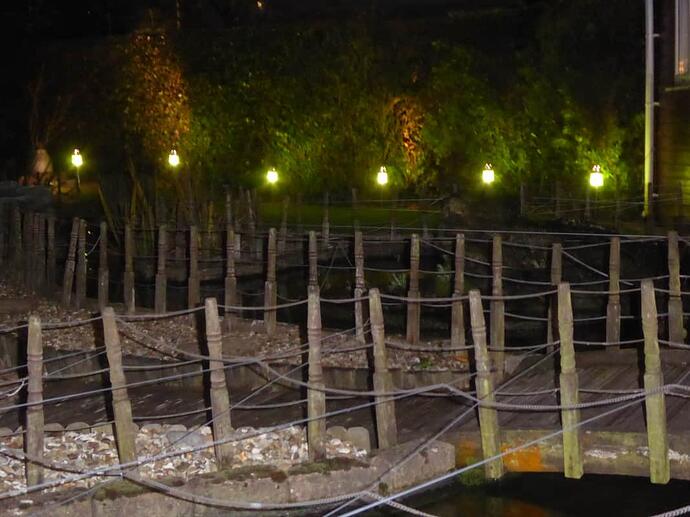
 So pretty!
So pretty!

